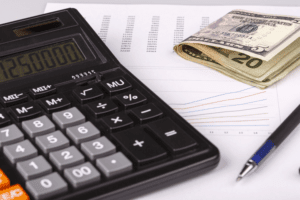
Changes in product costs directly impact the valuation of inventory on the balance sheet and the Cost of Goods Sold (COGS) on the income statement. Fluctuations in these values can influence reported profit and financial ratios. This purchases budget is required to calculate the amount of raw material that needs to be purchased for the production process and estimate the related costs. However, it is always better to calculate this cost per unit as it can help decide the appropriate sales price of the finished product.
- These costs are directly tied to the manufacturing process, transforming raw materials into finished products.
- Setting the correct prices for your goods and services will make you more likely to attract customers and make money.
- This cost can be used in several ways, either to report on the financial results of a business, or to make decisions about the viability of a product.
- It enables a company to make informed decisions, stay competitive, and increase profitability.
- By comparing the actual product cost with the estimated cost, operations managers can identify areas where costs are higher than expected and take corrective action.
- It is charged to the cost of goods sold as soon as the product is sold, and appears as an expense on the income statement.
What is Included in Product Cost?
The final costs determined as per the overhead budget are not capitalized under the balance sheet but expensed in the income statement as cost of goods sold. By understanding the relationship between product and production costs, businesses can better manage their operations and strive toward greater profits over time. By reducing costs where possible while also controlling prices, companies can create an environment that leads to success in the long term. This is the cost of the raw materials or components that go into producing a product.

Manufacturing overhead

The goal is to create a more accurate picture of the actual cost of each product. The raw materials that get transformed into a finished good by applying direct labor and factory overheads are direct in cost accounting. Direct materials are those raw materials that can be easily identified and measured. Direct material, direct labor, and factory overheads are its major types. Period costs, on the other hand, are not directly tied to producing a specific product.
How are product costs related to production costs?
If the product cost is higher than the http://wp1.wwwindustry.net/understanding-adjusting-entries-in-accrual/ industry average, it suggests that there may be inefficiencies in the production process that need to be addressed. When it comes to pricing, many stakeholders have a say in how much a customer should pay for a product. It should be a collaborative effort from executives, marketing, sales, product managers, and finance.

This ensures labor costs are recognized in the same period as the revenues they generate. Tax regulations, including IRC Section 263A, also require capitalizing direct labor costs into inventory, influencing tax liabilities and cash flow. Accurately calculating total product cost helps businesses set prices that cover expenses while ensuring profit margins. This overview examines the components and implications of total product HOA Accounting cost in business operations.
How to cut costs on direct materials
It is important to remember that accurate and up-to-date records are essential for effectively managing product costs, so be sure to review your financials regularly. With the correct data, you can accurately determine the cost of producing a product or service and maximize profits. Accurate calculation and allocation of product costs impact financial reporting, influencing the balance sheet and income statement.

Best Account Payable Books of All Time – Recommended
- By understanding their cost structure, businesses can better identify opportunities for improvement and make informed decisions about how to price products in the marketplace.
- Fixed costs remain constant regardless of how much is produced, while variable costs vary based on production volume.
- For example, an in-house employee will expect benefits like paid time off, workspaces, and equipment.
- Product and production costs are closely intertwined, making it essential for any business to understand this relationship to succeed in its market.
- Cost accounting also involves analyzing various costs and reporting them using several formats.
Cost accounting also involves analyzing various costs and reporting them using several formats. These formats, also known as costing techniques, allow companies to derive their product costs. When people are looking to buy something, they will often compare prices between different vendors before deciding. Cost is often one of the most important factors people consider when purchasing.

Managing product and production costs is essential for a successful business operation. It’s crucial to develop strategies to reduce production costs while controlling product costs so prices remain competitive. With careful planning and analysis, businesses can effectively manage product and production costs to maximize profitability. On the other hand, if production costs decrease due to increased efficiency or automation, then this could lead to lower product costs. With these essential points in mind, businesses can gain valuable insights into their financial performance and optimize product cost accounting. Accurate records are vital for understanding how product costs consist of much it costs to produce a product or service and maximizing profits.